39 understanding nutritional facts on labels
How to understand NUTRITIONAL FACTS label? - Lovely Tiny Things We all must have noticed some similar type of label on the backside of every food or beverages product. This is called Nutritional Facts Label, and it is a mandatory guideline for every food and beverage manufacturing company from the Food & Drug Administration. This label is been given on the product so that a consumer can make an informed and healthy choice which is related to its health ... Food Labels 101: Understanding the Nutrition Facts Label A sodium level of 140 mg or less on the nutrition facts label is considered low sodium. This is an essential number to look for when reading the label. Total Carbohydrates - Fiber and Sugar Foods high in fiber can be beneficial to a healthy diet, as fiber helps manage blood sugar levels and can lower cholesterol.
How to Read a Nutrition Facts Label | Keto Foods The three main parts of a nutritional label are: serving size, macronutrients, and percent daily value. Serving sizes differ for every product. Macronutrients include: protein (higher amounts will make you feel fuller), carbohydrates, and fats. Be aware of added sugars. Choose foods with high levels of Vitamin D, dietary fiber, calcium ...

Understanding nutritional facts on labels
Understanding the Nutrition Facts Label - Know Diabetes by Heart No label! You can look up the nutrition information via Google or a food application and determine it has about 20 grams of carbs. Adding the two together equals 57. Now let's say your insulin to carb ratio is 15. You would divide 57 by 15 to get 3.8 units (rounding to 4 units of insulin for that meal). Nutrients The Basics of the Nutrition Facts Label - Academy of Nutrition and ... The Nutrition Facts applies to the serving size, so if the serving size is one cup and you eat two cups, you are getting twice the calories, fat and other nutrients than what is listed on the label. Find out how many calories are in a single serving and compare it to your total calorie allowance for the day. Nutrition Facts: How to Read Nutrition Labels - bodyandsoulau The nutrition label lists total fat, saturated fat, and trans fat. It's the last two you want to focus on. Saturated fat is the kind you'll find in a burger, hot dog, or glass of whole milk....
Understanding nutritional facts on labels. Learn How the Nutrition Facts Label Can Help You Improve Your Health Nutrients Required on Label Vitamin D and potassium values are required. Calcium and iron will continue to be required. Vitamins A and C will no longer be required but can be included on a voluntary basis. Slight Decrease in Sodium Allowance The daily limit for sodium decreased slightly from 2,400 mg per day to 2,300 mg per day. Food Labels | CDC - Centers for Disease Control and Prevention If you eat the whole thing, you are eating 8 times the amount of calories, carbs, fat, etc., shown on the label. Total Carbohydrate shows you types of carbs in the food, including sugar and fiber. Choose foods with more fiber, vitamins, and minerals. Choose foods with lower calories, saturated fat, sodium, and added sugars. Avoid trans fat. How to Read Food Labels + Nutrition Facts • Healthy.Happy.Smart. Total carbohydrates on any nutrition facts label include dietary fiber, sugar, complex carbs, and other non-digestible additives. You'll see the total first, then carbs are broken down into dietary fiber and sugars - and you'll see an amount for each of those. Dietary Fiber -This is essential to a healthy diet. Understanding Food Labels | Nutrition facts, ingredients, claims, high The food label also compares the amount of nutrients in one serving of the food with the amounts of total fat, carbohydrate, dietary fiber, protein, vitamins and minerals that should be present in a 2,000 and 2,500 calorie daily diet. The nutrients are based on a dietary standard called the Daily Value.
How To Read Food and Beverage Labels - National Institute on Aging At the top of the Nutrition Facts label, you will find the total number of servings in the container and the food or beverage's serving size. The serving size on the label is based on the amount of food that people may typically eat at one time and is not a recommendation of how much to eat. Read more about serving and portion sizes. Understanding Nutrition Facts on Food Labels - enKo Products A nutrition label shows you a food product's nutrient content. A nutrient belongs to one of two groups: A carbohydrate, protein, or fat, which can serve as your tissues' building blocks. These subgroups are also the tissues' energy sources, and energy derived from food is expressed in calories. Understanding the Nutrition Facts Label - FamilyEducation Understanding the Nutrition Facts Label. Most packaged foods have a Nutrition Facts label. For a healthier you, use this tool to make smart food choices quickly and easily. ... Look at the calories on the label and compare them with what nutrients you are also getting to decide whether the food is worth eating. When one serving of a single food ... Understanding Food Labels - The Nutrition Source The Nutrition Facts Label The Nutrition Facts label is overseen by the U.S. Food and Drug Administration (FDA) and was first mandated under the Nutrition Labeling and Education Act of 1990 to help consumers make quick, informed food choices. It has undergone revisions, with the latest update released in 2016.
How to understand food labels | Eat For Health The Nutrition information panel on a food label offers the simplest and easiest way to choose foods with less saturated fat, salt (sodium), added sugars and kilojoules, and more fibre. It can also be used to decide how large one serve of a food group choice or discretionary food would be and whether it's worth the kilojoules. How to Read Nutrition Facts Labels the Right Way - GoodRx Nutrition Facts labels are required to list the total fat, saturated fat, and trans fats on packaged food products. It's important to choose foods with the right kinds of fats. Here are the differences between the fats you'll see on the label. Bad fats Saturated and trans fats are the less healthy types of fats. The Nutrition Facts Label: How to Read it - Molassity Pomegranate Molasses 1. Serving Information. Right at the top of the label, you'll see a bold heading that states Nutrition Facts. Directly below that will be a description of the number of servings per container and the standard serving size. The size of servings has been standardized to make it easier to compare similar food items. How To Understand Nutrition Facts Labels: A Guide To Food Labels Similarly, a healthy diet high in calcium, iron, vitamin D, and potassium can help reduce the risk of certain major health concerns like compromised bone health, red blood cell deficiency, and an increase in your blood pressure. 3. Labels can help you eat cleanly. Food nutrition labels can help you create your own version of a healthy diet.
How to Understand and Use the Nutrition Facts Label | FDA Dietary fiber, vitamin D, calcium, iron ad potassium are nutrients on the label that Americans generally do not get the recommended amount of. They are identified as nutrients to get more of....
Tips for understanding the Nutrition Facts Labels Many different vitamins are important, with vitamins A and C listed most often on the label. A deficiency of vitamin A, a fat-soluble vitamin, may cause night blindness and keratomalacia. A deficiency of vitamin C, a water-soluble vitamin, can cause scurvy. Minerals also are included on labels, with calcium and iron listed most frequently.
Understanding Nutrition Facts Food Labels - VEBA Resource Center All of the nutrition information on a food label is based on that serving size. So you'll need to adjust the other numbers if you eat more or less. Total carbohydrate. The grams of sugar listed are included in the "Total Carbohydrate." Saturated fat and trans fat. The lower the number of grams you eat, the better. Protein.
Learning To Read Labels :: Diabetes Education Online On a nutrition food label, subtract the fiber from the total carbohydrate amount. When you read food labels, the grams of sugar are already included in the total carbohydrate amount, so you do not need to count this sugar amount separately. The grams of sugar listed include both natural sugars, from fruit or milk, and added sugars.
Understanding nutrition facts on food labels - SheKnows From the FDA, here's a general guide to calories: 40 calories is considered "low" 100 calories is "moderate" 400 calories or more is "high" The average person needs between 1,600 and 2,400...
The New Nutrition Facts Label | FDA The U.S. Food and Drug Administration (FDA) has updated the Nutrition Facts label on packaged foods and drinks. FDA is requiring changes to the Nutrition Facts label based on updated...
Understanding Ingredients on Food Labels - American Heart Association Understanding Ingredients on Food Labels. Food labels are an important source of information about calories and the nutritional value of the foods you eat, a crucial tool in building a heart-healthy diet. The Nutrition Facts information is always displayed in the same orderly fashion and helps you understand how much of certain nutrients that ...
Reading Nutrition Facts Labels Like a Pro: Dietitian Tips ... - NutriSense Nutrition labels provide valuable information about the food we're eating, including the number of calories, fat, carbohydrates, protein, essential vitamins like vitamin D and minerals like potassium and magnesium it contains.
How To Read Food Labels: Understanding the Basics - Instacart The nutrition facts table is usually found on the rear or the side of the label. This is perhaps the most useful part of a food label, providing a detailed breakdown of the product's nutritional content, including calories, protein, carbohydrates, fat, and more. 1. Beware of misleading claims
Understanding Food Nutrition Labels | American Heart Association When the Nutrition Facts label says a food contains "0 g" of trans fat, but includes "partially hydrogenated oil" in the ingredient list, it means the food contains some trans fat, but less than 0.5 grams per serving. So, if you eat more than one serving, you could end up eating too much trans fat.
Understanding Nutrition Labels | BestFoodFacts.org Understanding Nutrition Labels 12/21/2013. Grocery stores are full of food and information. It's a bit like a library. Certainly you should read covers, but don't judge food ONLY based on what you find there. ... Image: "Fruit and Nutrition - Eating Healthy-Nutrition Label" by ...
Nutrition Facts: How to Read Nutrition Labels - bodyandsoulau The nutrition label lists total fat, saturated fat, and trans fat. It's the last two you want to focus on. Saturated fat is the kind you'll find in a burger, hot dog, or glass of whole milk....
The Basics of the Nutrition Facts Label - Academy of Nutrition and ... The Nutrition Facts applies to the serving size, so if the serving size is one cup and you eat two cups, you are getting twice the calories, fat and other nutrients than what is listed on the label. Find out how many calories are in a single serving and compare it to your total calorie allowance for the day.
Understanding the Nutrition Facts Label - Know Diabetes by Heart No label! You can look up the nutrition information via Google or a food application and determine it has about 20 grams of carbs. Adding the two together equals 57. Now let's say your insulin to carb ratio is 15. You would divide 57 by 15 to get 3.8 units (rounding to 4 units of insulin for that meal). Nutrients
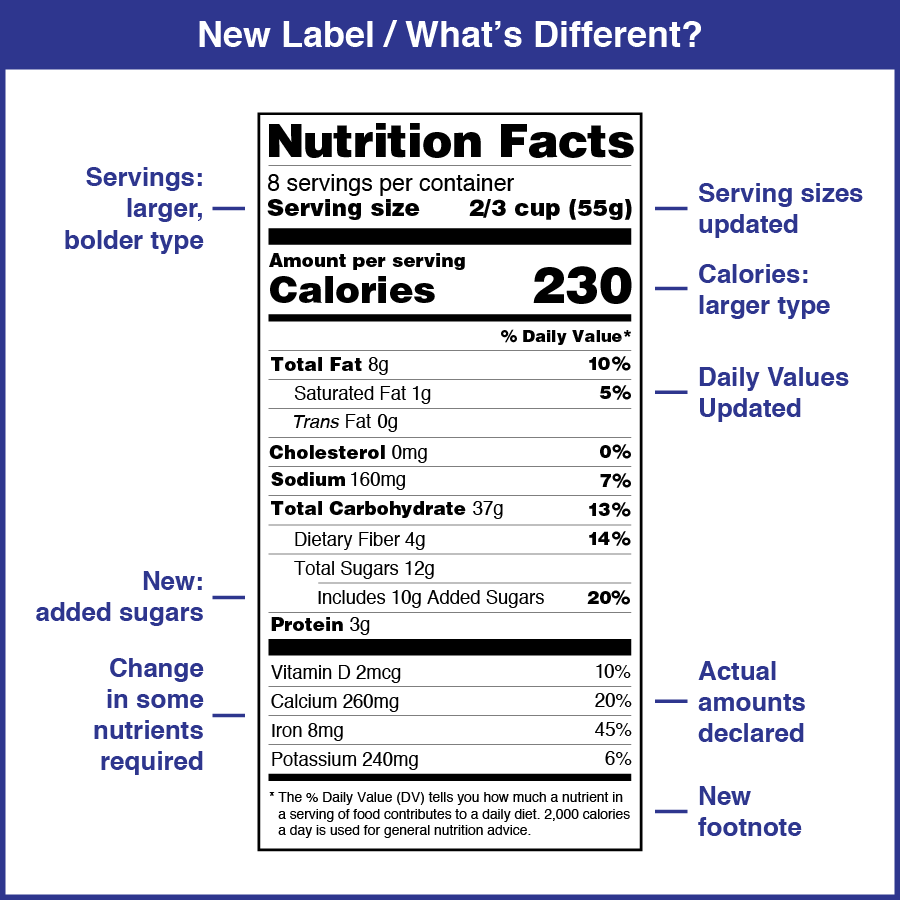






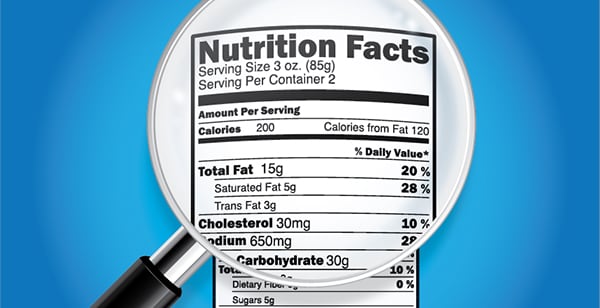

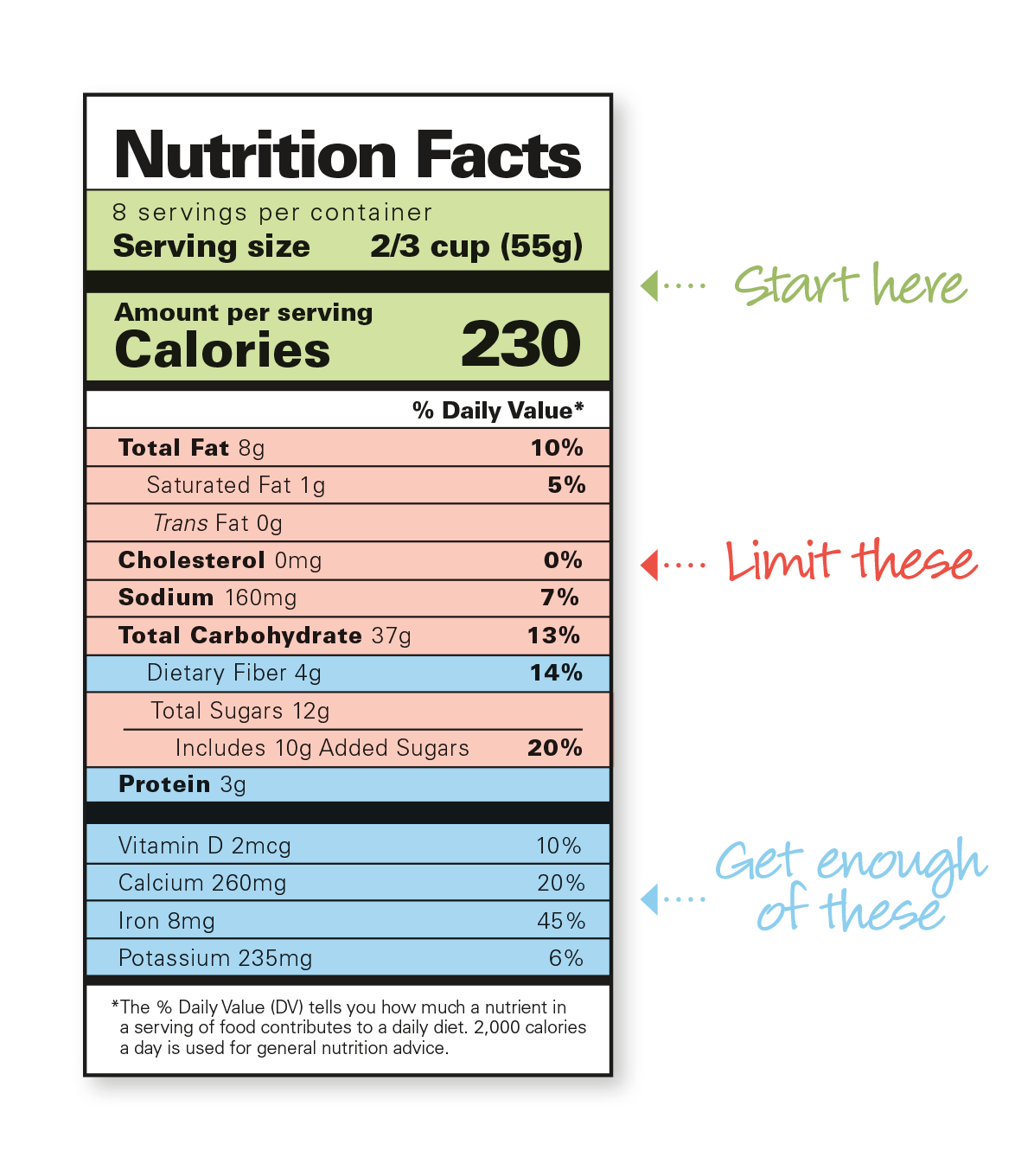


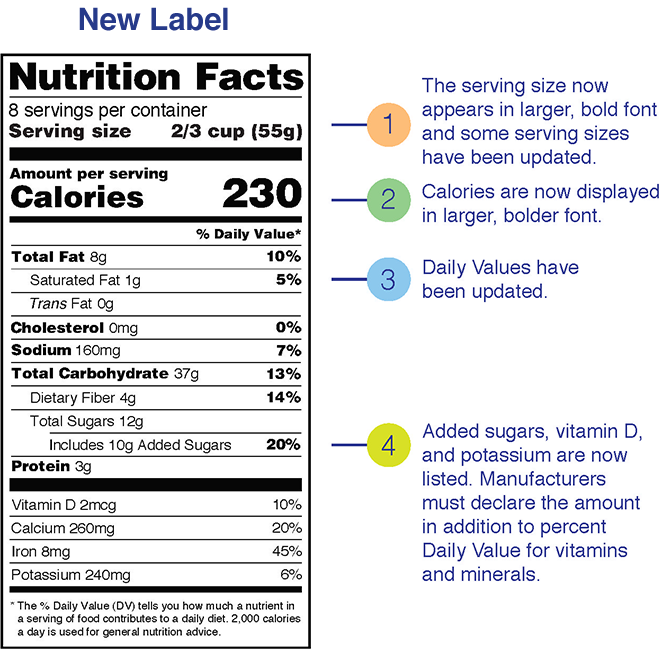
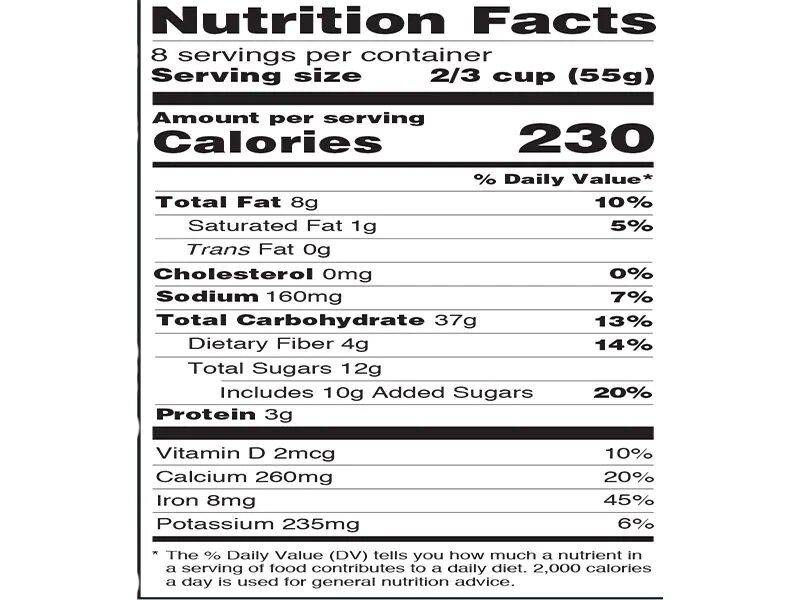
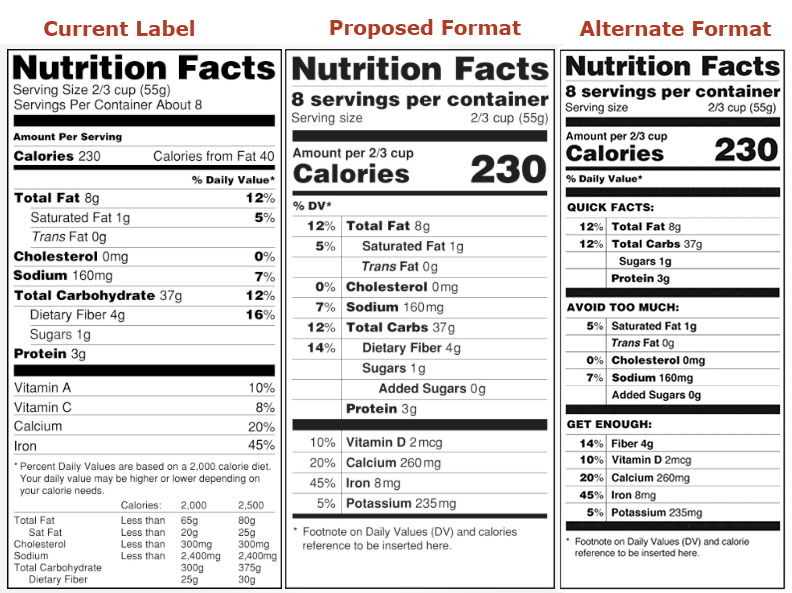
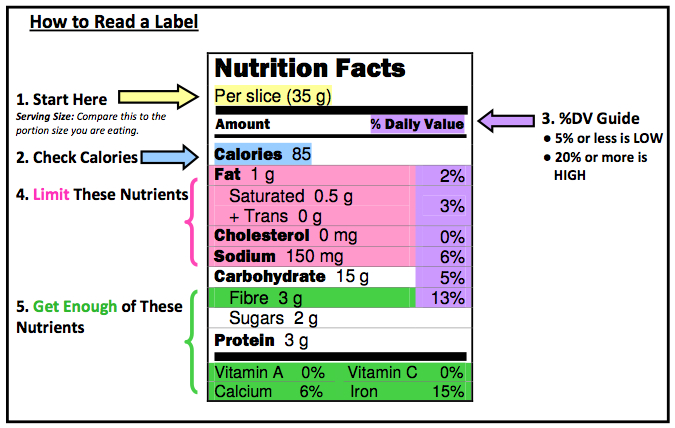
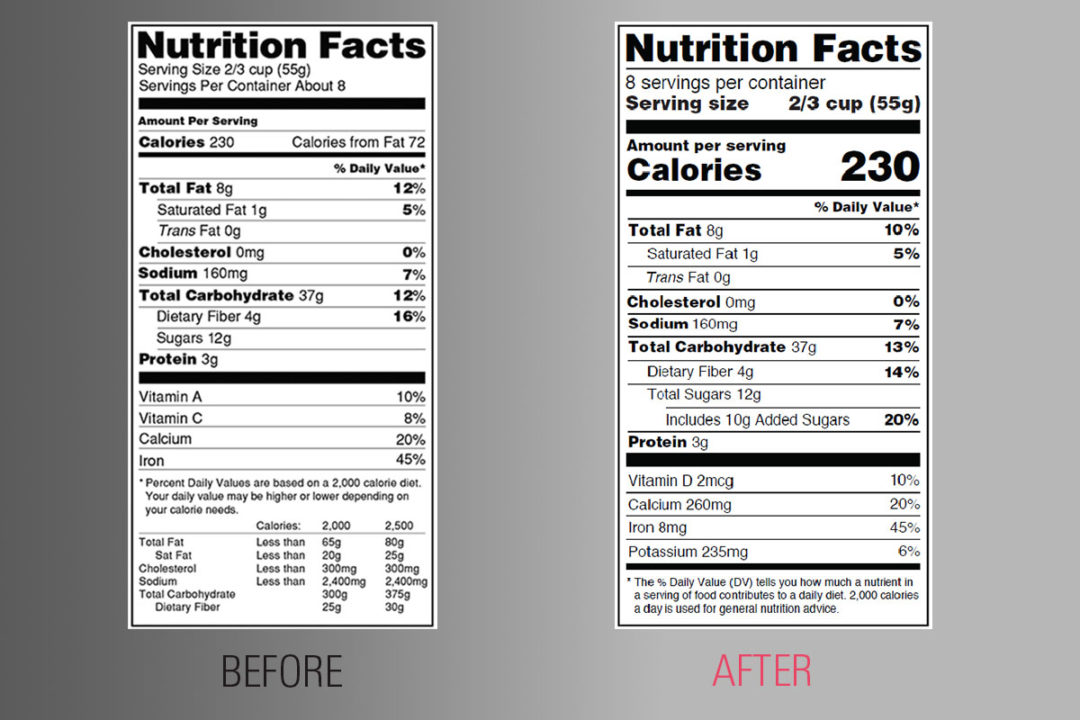
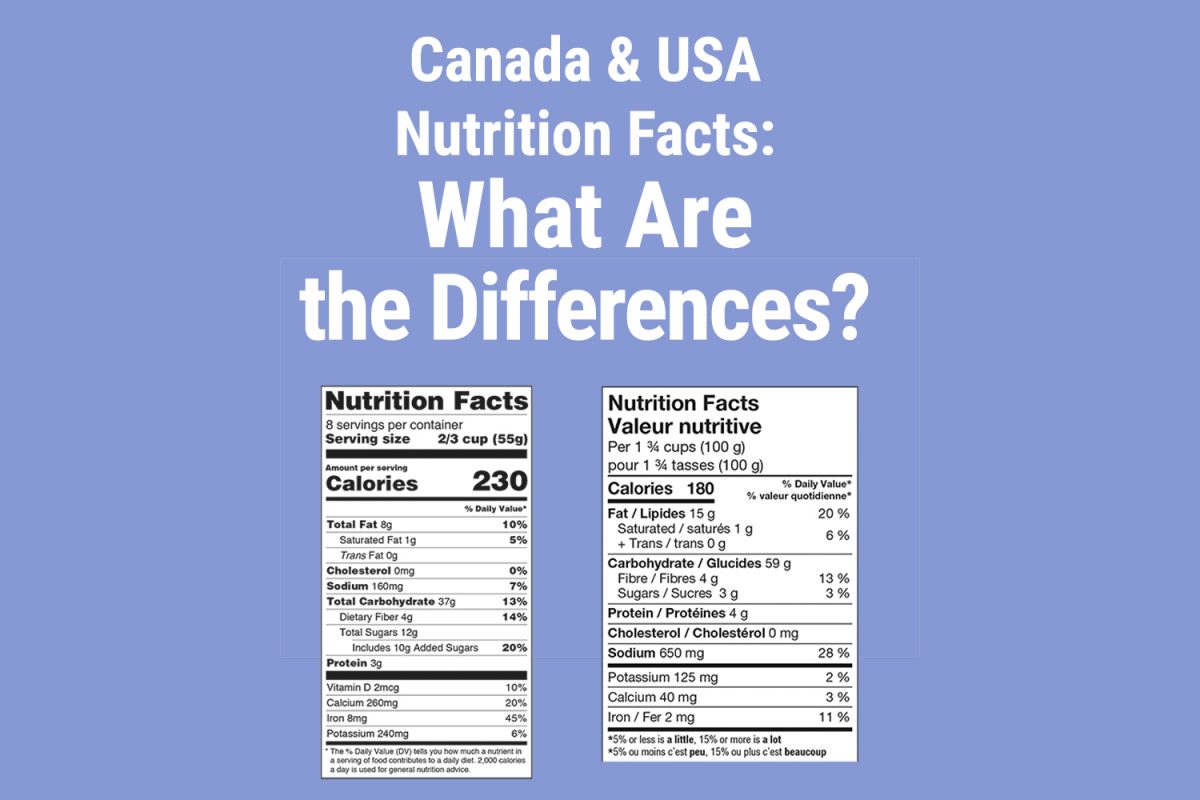



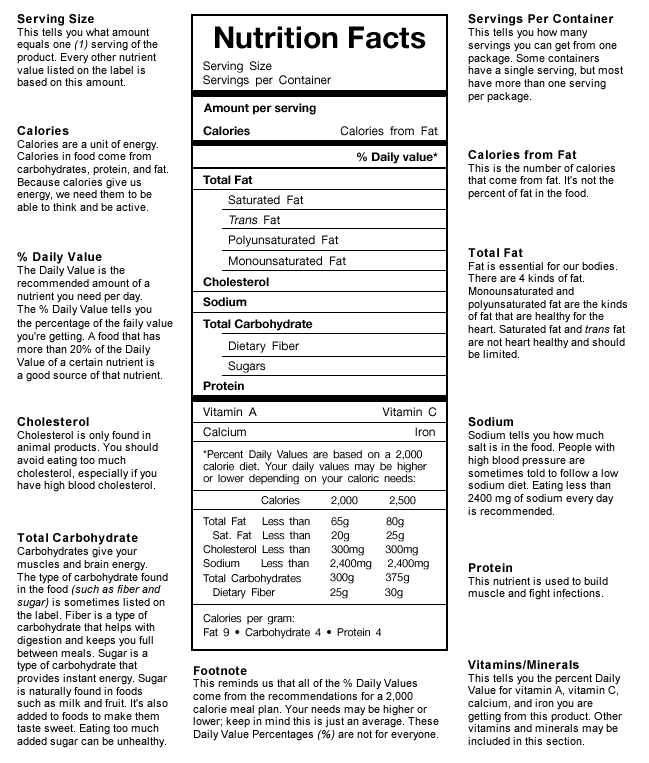
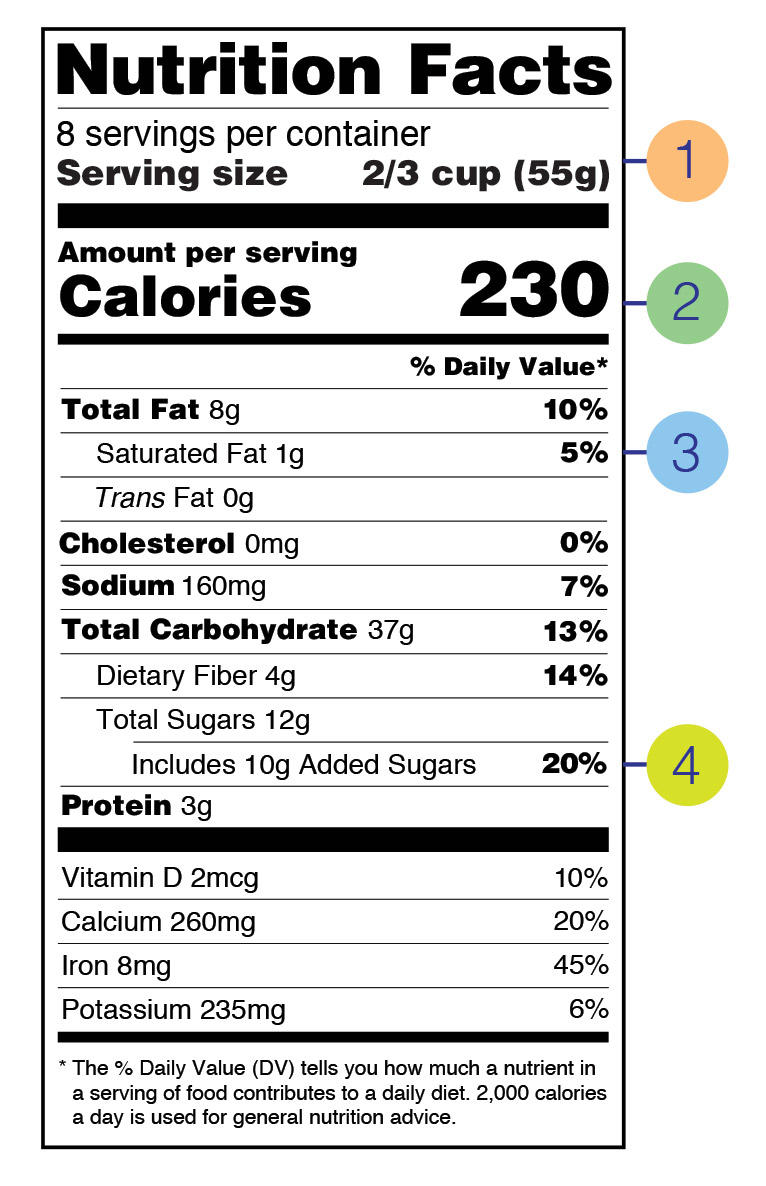

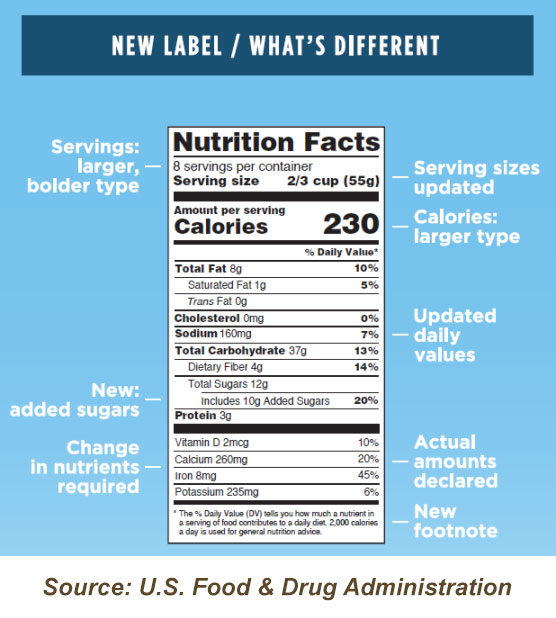
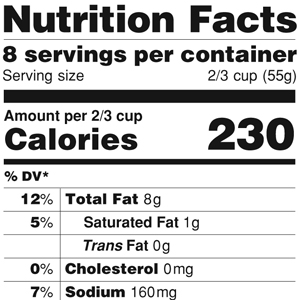



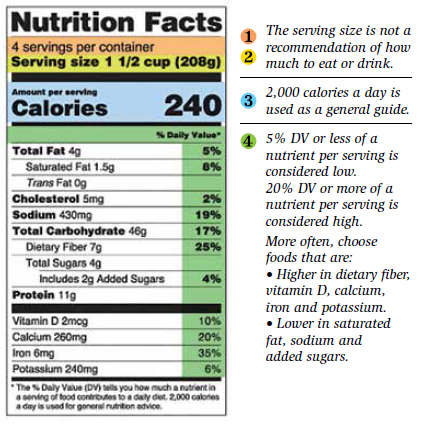

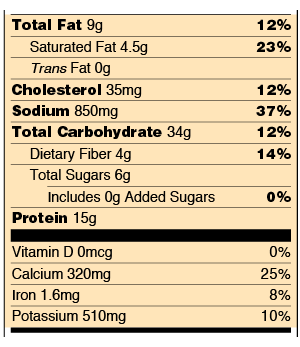
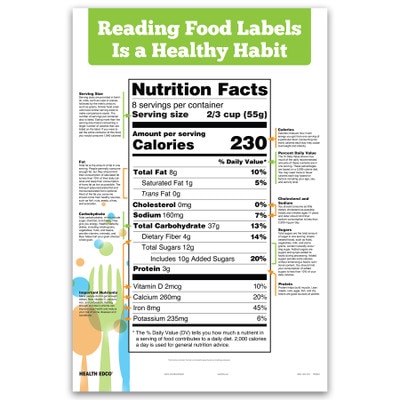

Post a Comment for "39 understanding nutritional facts on labels"